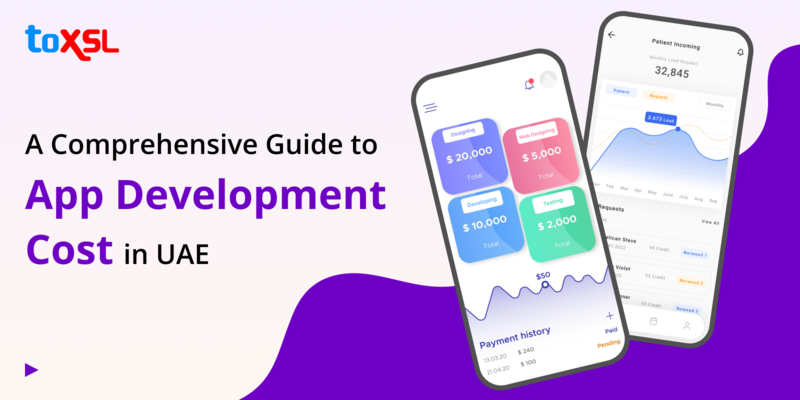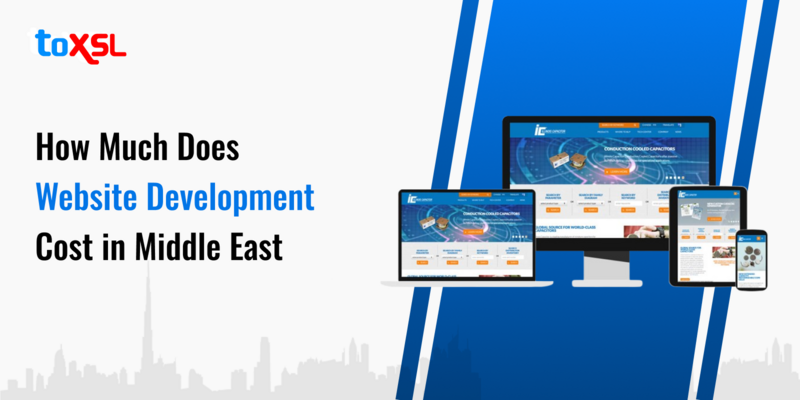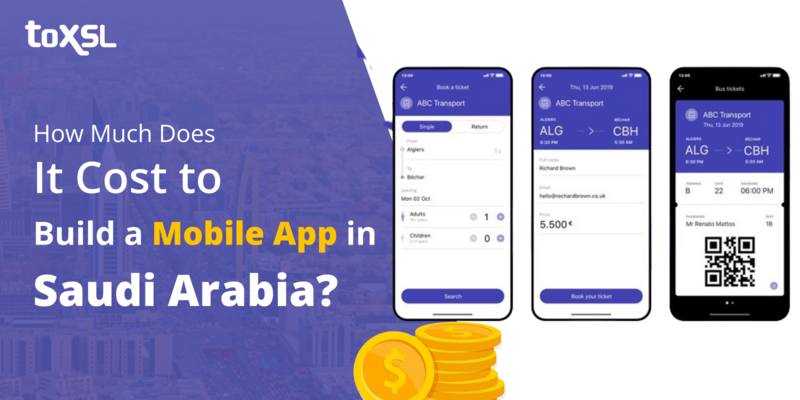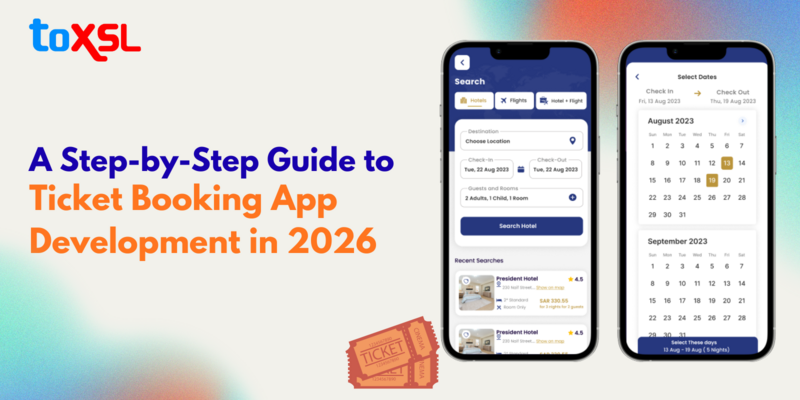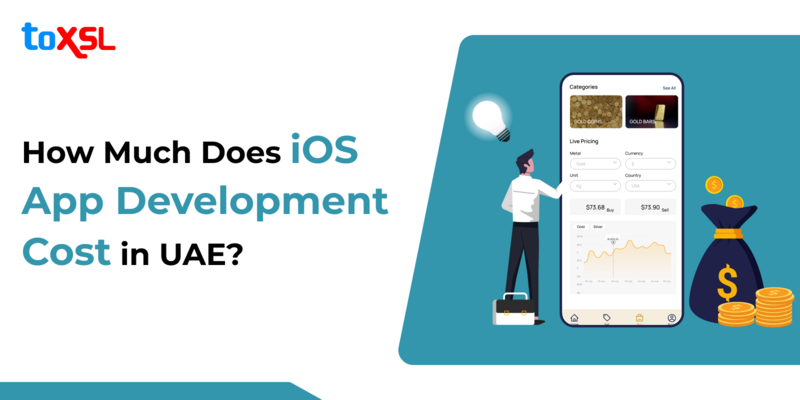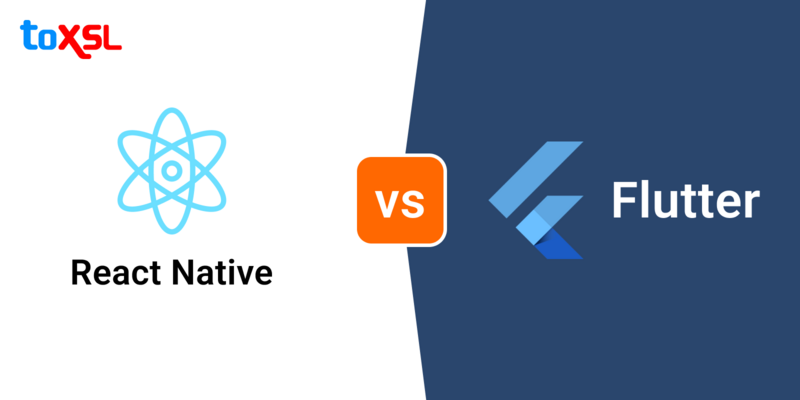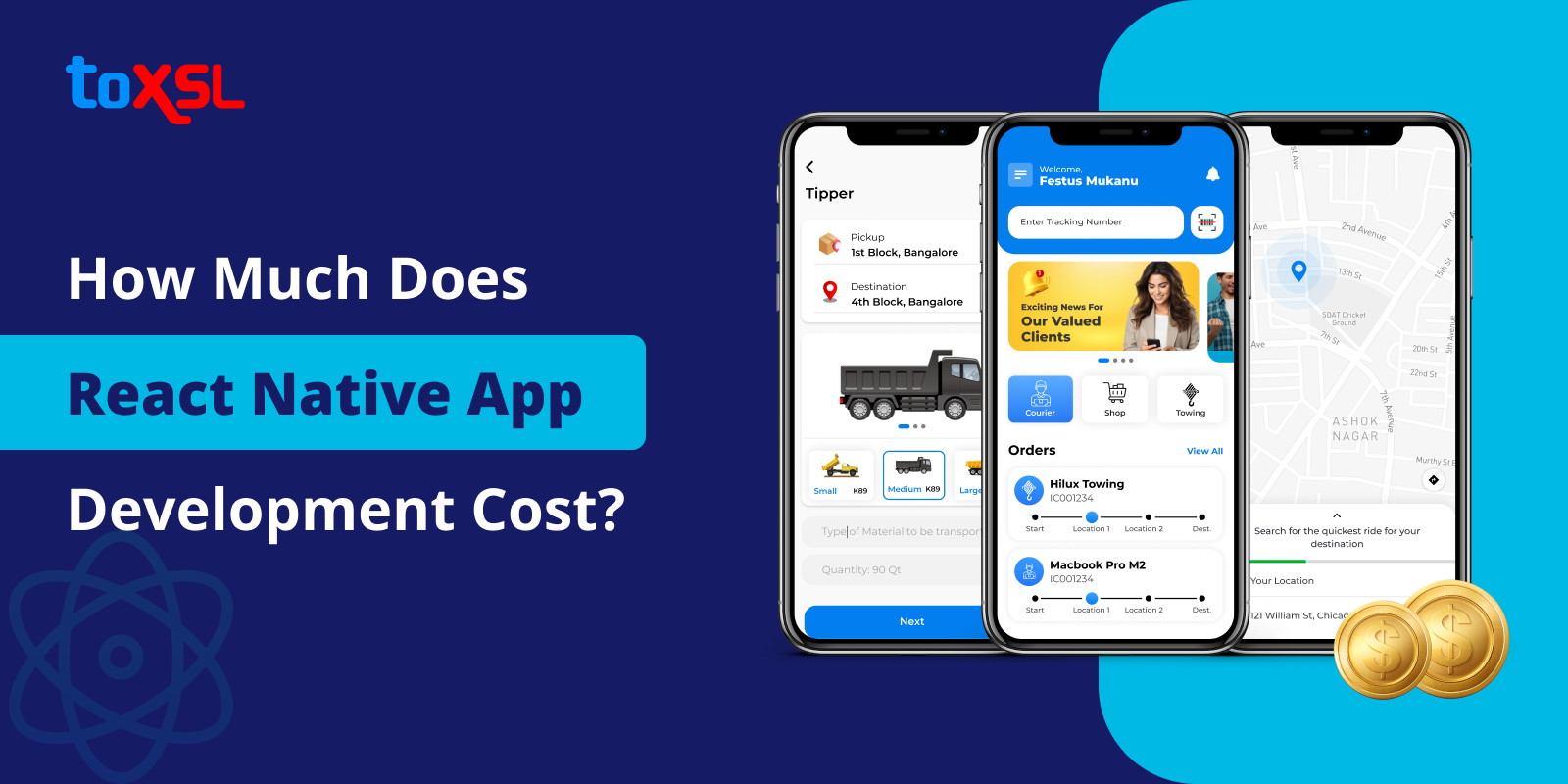
Did you know that smartphone sales are estimated to reach $110 billion in 2024? So, how do businesses reach these smartphone users to enhance their sales? The solution is mobile apps. But, again, there are various platforms and developing mobile apps for each platform costs a lot.
So, what is the solution? Well, cross-platform apps can help you here. These apps are developed with the help of the React Native framework. According to a report, the majority of apps that are downloaded in the US are developed using React Native.
Released on March 26, 2015, React Native is an open-source cross-platform app development framework developed by Meta Platform Inc. It gained popularity due to its capability to develop mobile apps for Android and iOS using a single-code base. Hence, making it the developer's first choice. So, whether you want to develop an app for Windows, Smart TV, tvOS, iOS, Android, or macOS, the React framework allows developers to leverage native platforms.
Reasons to Choose React Native for App Development
React Native has emerged as a leading framework for mobile app development, offering numerous advantages that cater to both developers and businesses. Before diving deeper into the blog, let us first understand why businesses must choose React native app development for their business:
1. Open-source: One of the main benefits of React Native is that it is an open-source framework. This means that developers can access the source code freely, allowing them to modify and enhance it according to their project needs. The open-source nature fosters a vibrant community that contributes to the framework, ensuring continuous improvement and a wealth of resources, such as libraries and plugins, that can be utilised in app development.
2. Hot Reloading Feature: React Native's hot reloading feature allows developers to see changes in real-time without needing to rebuild the entire application. This capability significantly speeds up the development process, as developers can make adjustments and immediately view the results. It enhances productivity and reduces downtime during the coding phase, making it easier to fix errors and implement new features efficiently.
3. Better User Interface: The framework provides a native-like user experience by using actual native components. This results in apps that not only look good but also perform well across both iOS and Android platforms. React Native's component-based architecture allows for the creation of highly responsive interfaces, which are crucial for user engagement and satisfaction.
4. Reusable Code: One of React Native's standout features is its ability to facilitate code reusability. Developers can write a single codebase that works on both iOS and Android platforms, allowing for approximately 90% code reuse. This drastically reduces development time and costs since there is no need to create separate codes for different platforms. Consequently, businesses can launch their apps faster while maintaining quality.
5. Enhanced Flexibility: React Native offers enhanced flexibility in development. Its modular architecture allows teams to work on different components simultaneously, which accelerates the development timeline. Additionally, developers can easily integrate third-party plugins, which further enhances functionality without sacrificing performance or user experience.
6. Third-Party Library Support: The framework supports various third-party libraries, which can be seamlessly integrated into applications. This support enables developers to extend the capabilities of their apps without having to build everything from scratch. By leveraging existing libraries, teams can focus on unique features that differentiate their applications in the marketplace.
Cost of React Native App Development
In the above section, we have discussed the most powerful reasons to make React Native App Development your first choice. But now, as a business owner, you must be thinking about the cost involved in the development process. Now, in this section, we will discuss the cost associated with the app development and other factors involved. So, what is thecost of developing a mobile appusing React Native?
The cost of developing a mobile app is not fixed, or we can say there is no one-size-fits-all kind of thing. It highly depends on the company you are choosing, the kind of features you want to add, and more. So, let us give you a generalized cost related to React Native App Development. In general, the cost lies in the range of $15,000 to $150,000, depending on the business' requirements.
React Native App Type Cost of Development Estimated Time Frame
But is that it? Well, the answer is “no.” The cost can vary as per business demands. So, what are the deciding factors associated with the cost of app development? Keep reading the blog to learn more.
Factors Affecting The Cost of React Native App Development
Let us now shed some light on the factors associated with the cost of React Native app development. This section of the blog will make it easy for you to understand the cost and make an informative decision; hence, keep reading the blog:
1. App Features: The number and type of features included in the app also significantly impact costs. More features require additional development time and resources. For instance, integrating complex systems such as payment gateways or social media functionalities will increase both time and cost compared to simpler features like a basic calculator.
2. App Category: Different app categories come with varying requirements and complexities. For example:
• E-commerce apps require features like product listings, payment gateways, and user accounts.
• Social media apps: demand real-time data processing and interactive features.
Each category necessitates specific functionalities that dictate the overall cost.
3. Hardware requirements: If the app relies on specific hardware integrations, such as IoT devices or advanced sensors, this will elevate development costs. Developing apps that require extensive hardware interaction is generally more complex and time-consuming than those that do not.
4. UI/UX Design: The design aspect of an app plays a crucial role in its overall cost. A well-designed user interface (UI) and user experience (UX) are essential for user engagement. More intricate designs with advanced animations and interactions require additional time and expertise from designers, thus increasing costs. The choice of UI elements provided by React Native can help mitigate some expenses, but still requires thoughtful planning.
5. Maintenance Charges: Post-launch maintenance is another critical factor in the overall cost structure. Regular updates, bug fixes, and design changes typically account for about 20% of the initial development cost annually. This ongoing expense should be factored into the budget from the outset to ensure long-term viability and user satisfaction.
Conclusion
We have reached the end of this blog, and we hope that you got a clear idea about the benefits of using React Native to your app and the cost associated with the app development. But if you have any doubts related to the app development, cost of app development, or any other app development doubt, feel free to reach us.
ToXSL Technologies is a leading React Native App Development Company in the market. With over 12 years of experience, we have served numerous clients with our innovative and high-end cross-platform solutions. So, if you are looking to hire React Native developers, look no further than ToXSL Technologies. Get in touch with us today and leverage our expertise.
FAQS
1. What is the typical cost range for developing a React Native app?
The cost of developing a React Native app generally ranges from $15,000 to $150,000 or more. This wide range is influenced by various factors such as the complexity of the app, the features required, and the hourly rates of developers. Simpler apps may fall on the lower end of the spectrum, while complex applications with advanced functionalities can significantly increase costs.
2. What factors influence the cost of React Native app development?
Several key factors can affect the overall cost:
App Complexity: The more complex the app, the higher the development costs. Apps are typically categorized as simple, medium, or complex, each requiring different levels of effort and resources.
Features and Functionalities: Additional features like payment gateways, user authentication, or third-party integrations can increase development time and costs.
Development Team Location: The geographical location of your development team plays a significant role in pricing. For instance, developers in North America usually charge more than those in India or Eastern Europe.
Design Requirements: A visually appealing UI/UX design can add to the overall cost due to increased design time and resources.
3. How long does it take to develop a React Native app?
The timeline for developing a React Native app varies based on its complexity:
Simple Apps: Typically take about 3 to 6 months to develop.
Medium Complexity Apps: Usually require around 6 to 9 months.
Complex Apps: Development can extend from 9 to 12 months or longer, depending on features and integrations. Longer timelines will also impact overall costs due to increased labor and resource expenses.
4. How can I reduce the costs associated with React Native app development?
To optimize costs while maintaining quality:
Focus on Core Features: Start with a Minimum Viable Product (MVP) that includes only essential features. This approach allows for user feedback and iterative improvements without overspending initially.
Choose the Right Development Team: Consider partnering with mid-cap companies that balance cost and quality rather than opting for freelancers or high-cap agencies.
Plan Thoroughly: A well-defined project scope and clear requirements can help avoid unexpected expenses during development.
Leverage Existing Libraries: Utilizing ready-made solutions and libraries can save time and reduce costs associated with custom coding.

